Unique Team Traits: Being aggressive from a passive system makes New Jersey a Devil in the neutral zone
theScore’s multi-part team previews include a look at something that separates each team from the pack. From specific breakouts to powerplay formations and beyond, Justin Bourne and Thomas Drance hope to highlight something you haven’t noticed in the past.
What we noticed
The Devils are an extremely “low event” team, partially thanks to their stingy neutral zone play
The 2013-14 New Jersey Devils were never going to be named The Greatest Show on Ice, simply because their style limits noteworthy plays from happening. They don’t allow shots (or take them), they don’t allow goals (or score them), and somehow nothing else seems to happen, either.
This is at least partly due to their personnel and their super efficient neutral zone forecheck. When players trust their teammates to do their respective jobs, they’re able to be more aggressive with their own, as New Jersey demonstrated throughout last season.
We’ll get more into exactly what I mean, but first ...
The numbers

No team allowed fewer shots than the Devils’ 25.5 per-game average, which translated into 2.38 goals against per game, sixth best in the league. They managed this feat despite finishing last in the NHL in blocked shots, which highlights how few attempts they allowed.
The problem: the numbers looked the same at the other end. They had the third-lowest shots-for total (26.8), while their 2.4 goals per game ranked 27th overall. They were shutout 10 times, a number surpassed by zero teams.
All of this led to the Devils playing in a whopping 50 one-goal games - more than any other team. Trying to keep games close seems kinda smart when you go 1-8 in two-goal games (a .111 winning percentage, worst in hockey).
This isn't the passive, pure trapping Devils of yore, so ... how did we get here?
The breakdown
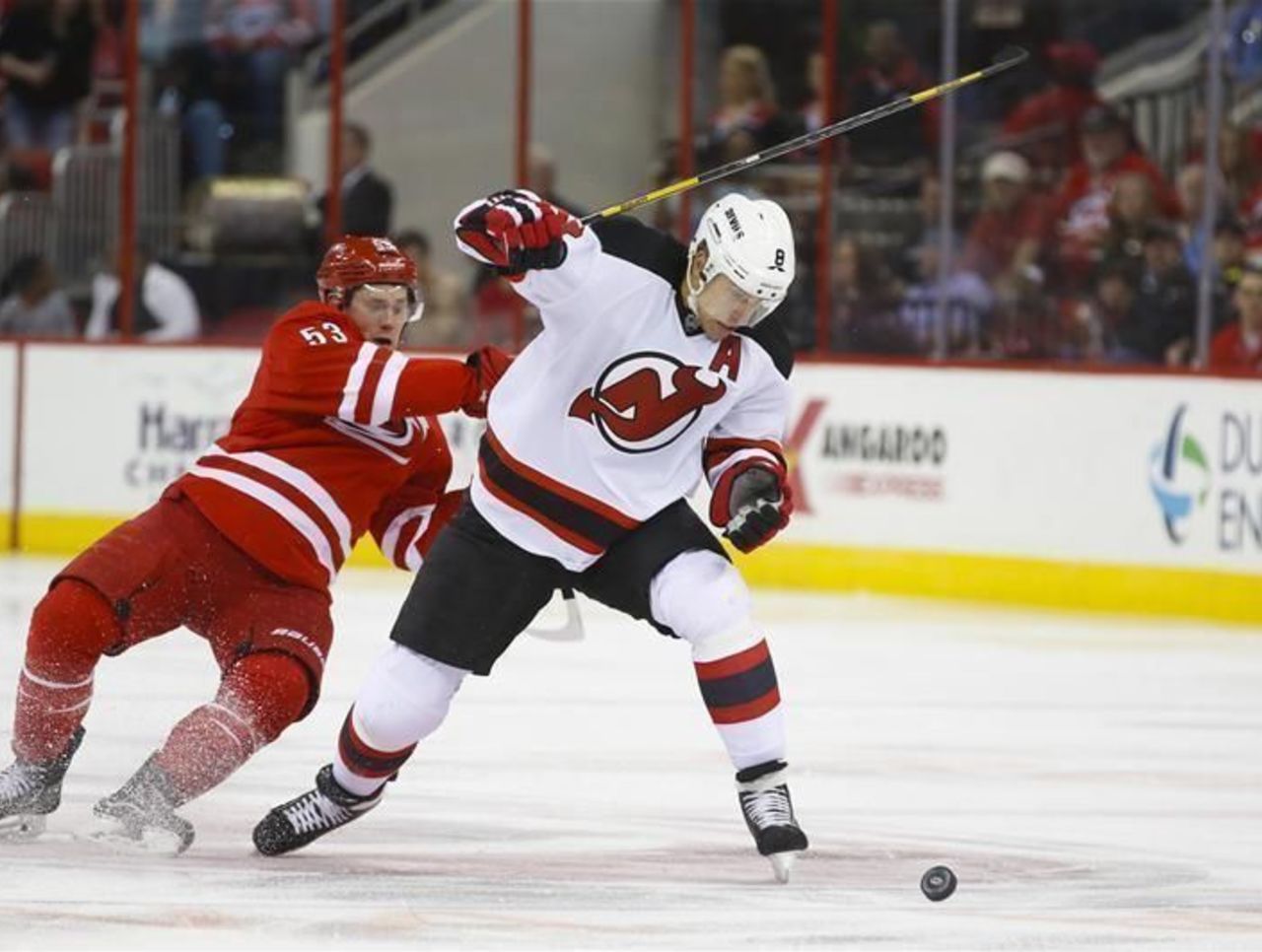
Hockey teams without the puck automatically fall into a system, and for many it takes years of practice and learned discipline to really figure out how to be reliable within this structure. Older players tend to be more consistent in their positional play for this reason.
Well, the Devils are as old as dirt - they were the oldest team in hockey last year - and are nails within their system.
I’m not claiming to be in the room with head coach Peter DeBoer here, but from what I can tell, that discipline combined with an aggressive neutral zone forecheck contributes to what makes the Devils so “low event” against. It still seems to be a 1-2-2, but New Jersey involves their defense heavily to keep the neutral zone a swamp for opponents.
Your normal 1-2-2 looks something like the picture below. F1 is up ice, pushing the puck to the wall; F2 is on the defensive side of the opposing winger on the wall; F3 is above the opposing center; and the defensemen are making reads from there.
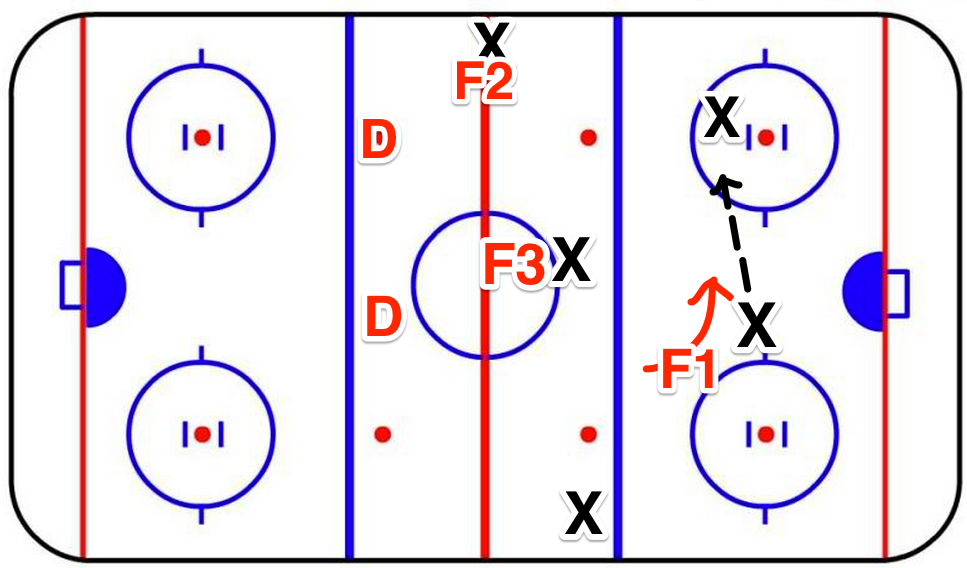
In today’s neutral zone regroups, teams tend to stretch the strong side winger. The Devils’ set up allows for F2 to release him to the D-man if he does (that way he doesn’t simply give up the red line, and he can try to make a play on the puck), or just check him if he doesn’t.
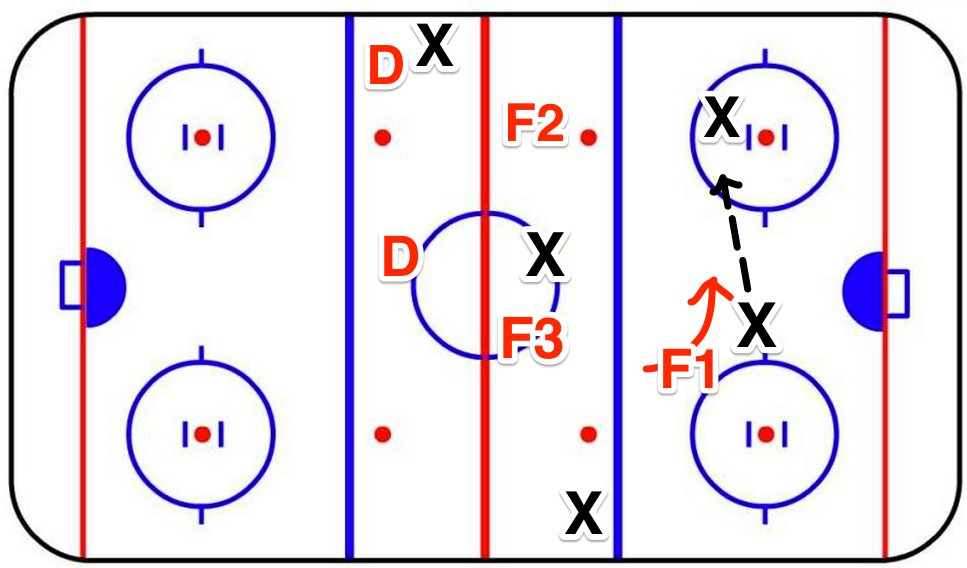
With the Devils, F3 knows that when the puck goes up that wall, he has to be ready to retreat and cover.
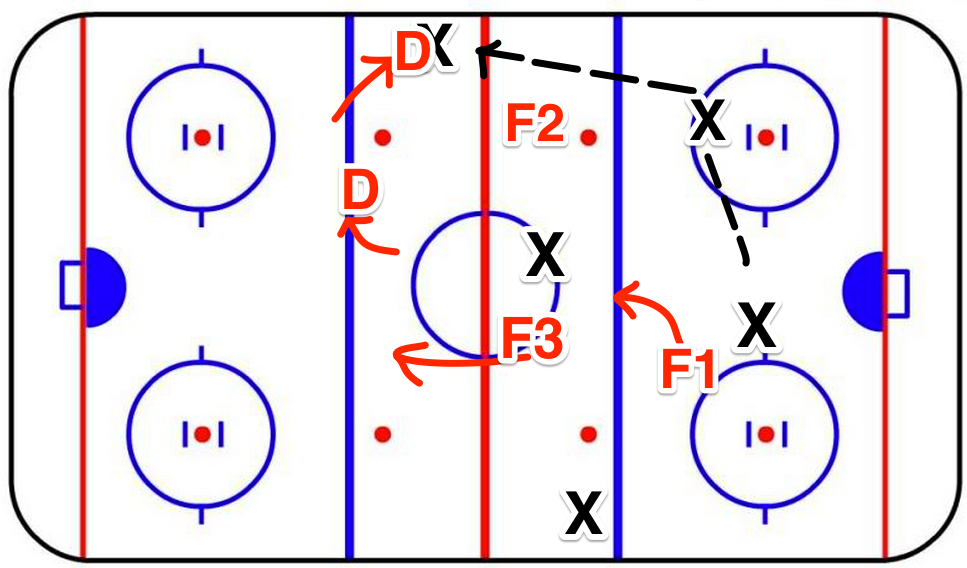
You can easily have numbers back this way, and you can still stuff plays on the wall and pick off a few passes.
If the puck is run back D-to-D by the opposing team and they try to go up the other wall, it’s an easy shift to the other side.
From what I can tell, when this happens against New Jersey, F1 and F2 switch. Here’s a quick look at that - it’s not the craziest wrinkle (even some junior teams use it instead of keeping F1 on the puck), but it does emphasize how much rotating they do to keep pressure on.
F1 swings across …
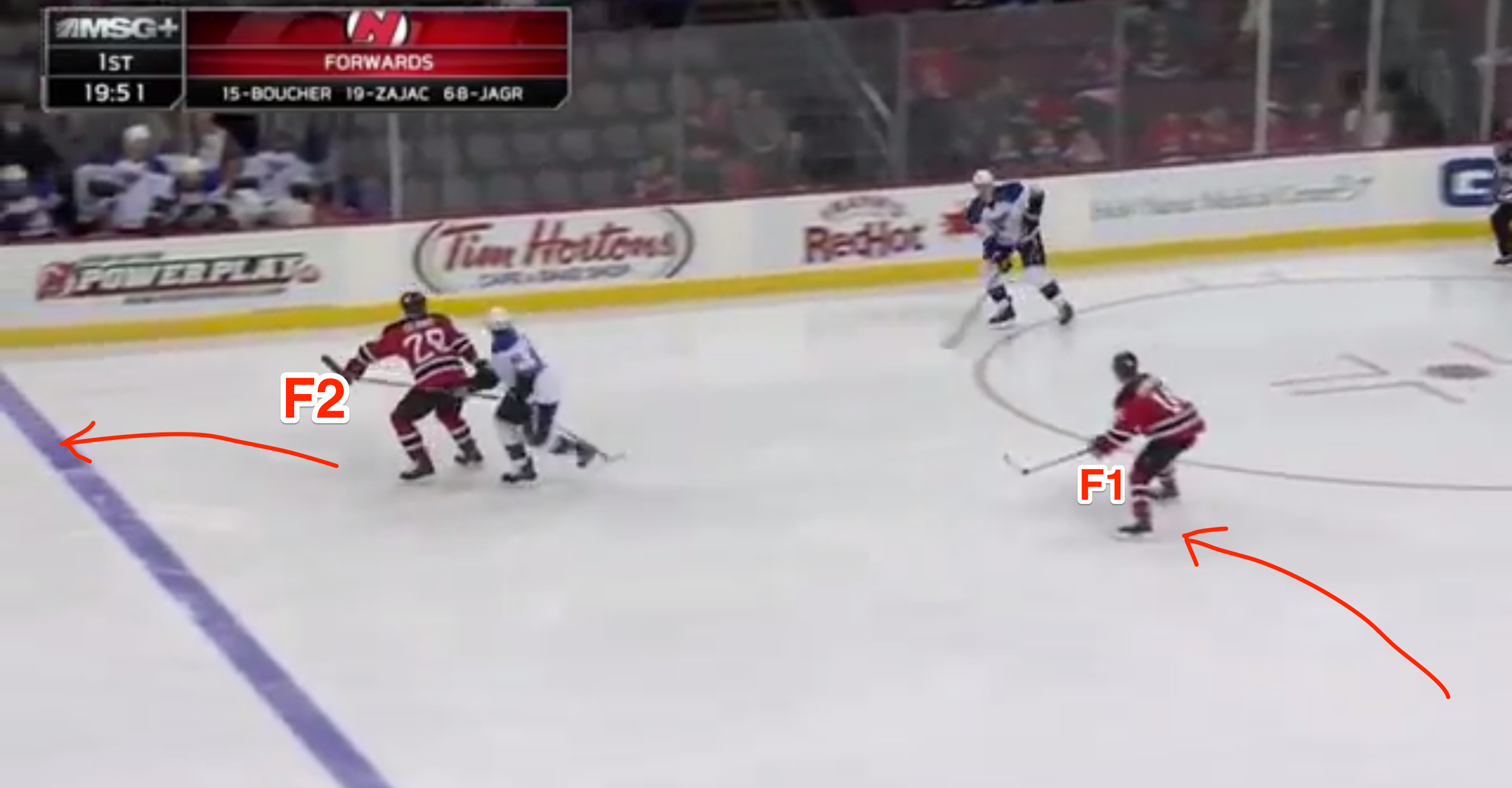
The puck goes D-to-D, and F1 is into F2’s area of the ice …
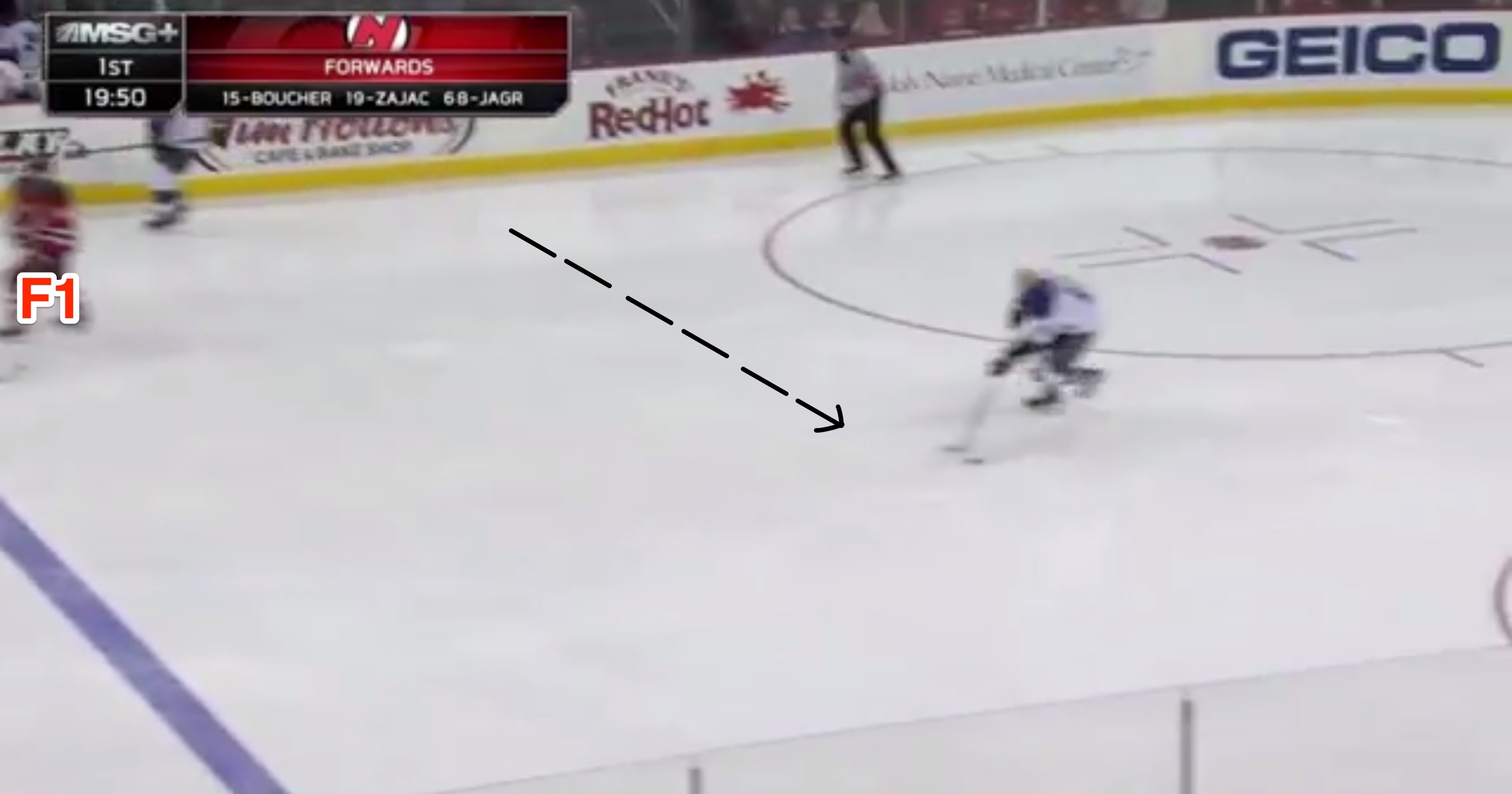
So F2 comes across hard and becomes F1.
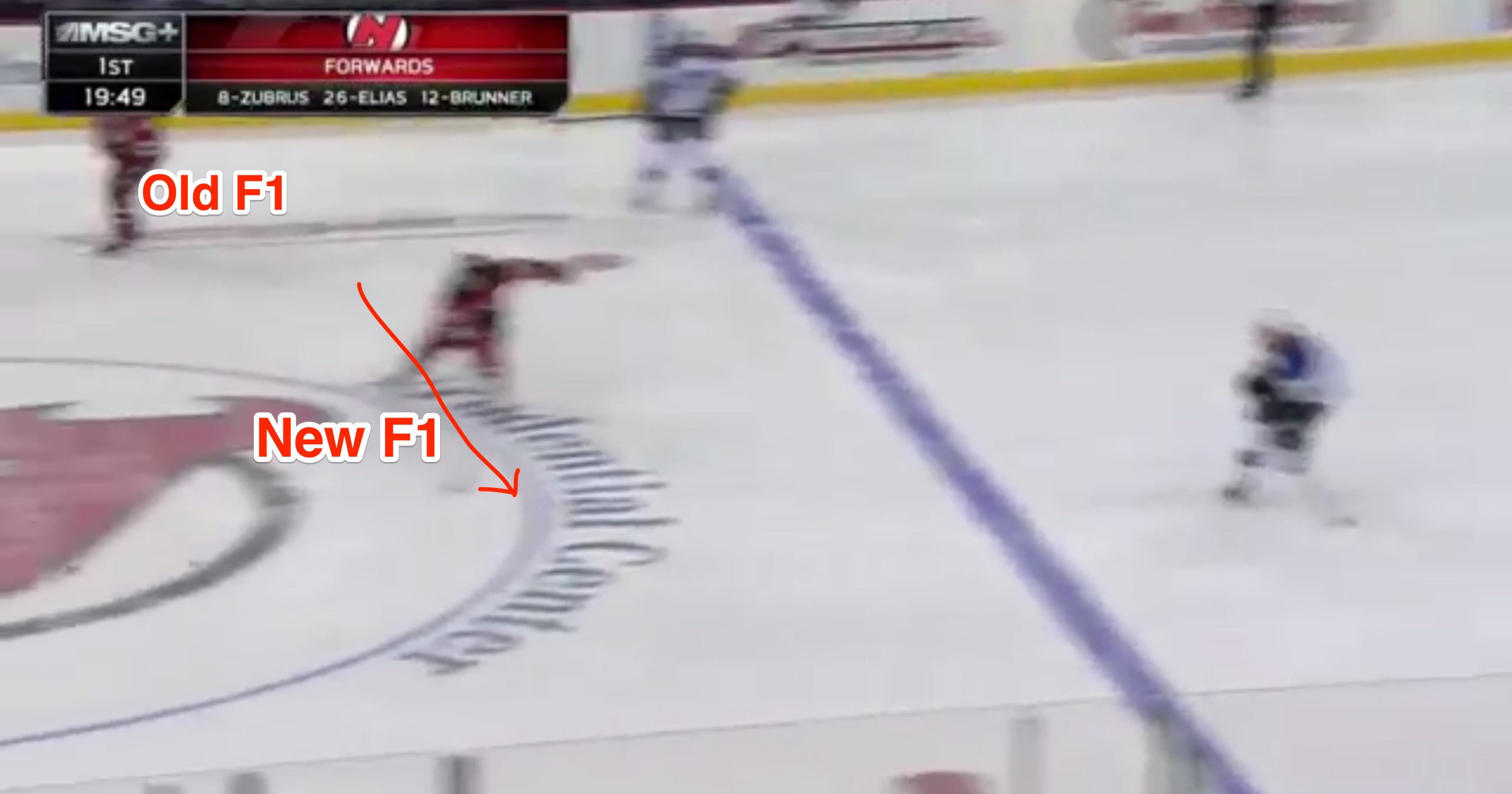
(You’ll see in a GIF below that those two blurs did in fact switch.)
But anyway, onto the aggressive D and smart forwards.
Of note in the GIF: as the Islanders go up the strong side, the guy stuffing the play along the wall is number seven, Mark Fayne, while number 17, Michael Ryder (F3 in this case), has receded back into coverage at the bottom of the screen, staying with the Islanders other forward.
(Courtesy: MSG)
That also frees up someone to go back on a dump in (with an outlet) had the Isles got the puck deep.
You can see below (top of screen) that as the play goes up the strong side, the Devils’ D-man steps in to stuff the play while Jaromir Jagr (F2) goes back. My favorite part, however, is Travis Zajac (19) starting in as F1 after the Pens recover the puck, then seeing or hearing Danius Zubrus (number eight), and immediately peeling off to resume his role on the new strong side.
(Courtesy: MSG)
But again, the real noteworthy part: a D-man pinches up along the wall at the bottom of the screen, and this time the puck goes all the way down for an icing. That’s Fayne’s second appearance doing a killer job in the neutral zone. He was way up-ice there.
This time we’re going to look at something different: Mark Fayne! There he is again overtop the Blues forward in the neutral zone where the Blues defender is trying to make the pass.
And again, Michael Ryder (17) is faded deeper than the aggressive D-man. He stayed with the other forward through center, meaning everyone was covered.
This rotation helped the Devils allow the fewest shots against per carry in, the fewest shots against per dump in, and the fewest shots against per zone entry period. Nobody got easy access. They also allowed the second-lowest percentage of carry ins as a proportion of total entries, at least partially thanks to their defensively aggressive play through the middle.
The Devils play different hockey in both the neutral zone and defensive zone, which allows them to hang in the top five of Corsi and Fenwick with L.A., San Jose, Boston, and Chicago. At the very least, activating their D on regrouping forwards seems like part of the reason why.
Now, if only they could bury pucks at an average rate. They could take the step from "nothing happens" to "interesting" real quick.